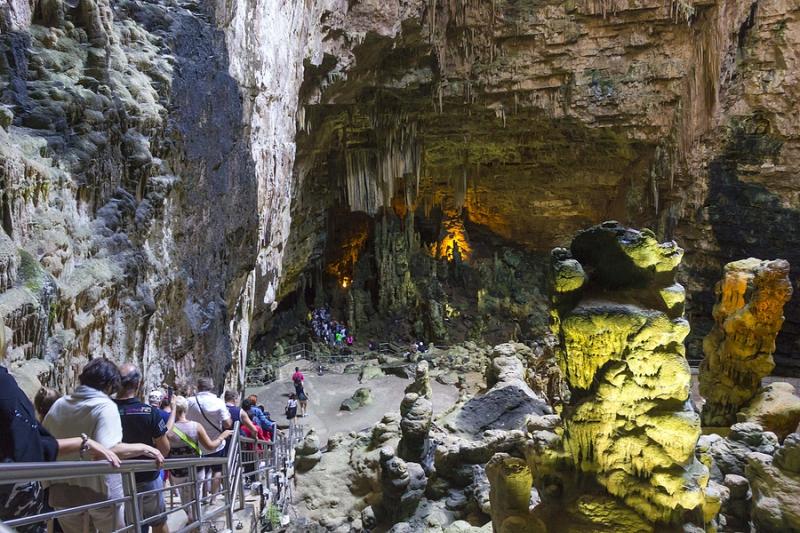With the latest heat wave, dubbed Lucipher, sweeping across Italy, and temperatures easily reaching 40°C in cities, you may want to look for some respite from the heat. Why not head underground to visit some of Italy’s most fascinating caves? Here are five to consider, from north to south and the islands.
Grotte di Frasassi (Marche)
One hour from Ancona, in Le Marche region, the Frasassi caves is Italy's largest cave complex. Dating as far back as 180 million years ago and extending for 35 km, this subterranean world of calcareous rock formations first opened to the public in 1974, and continues to attract curious visitors. The caves have an average humidity of 90% and a steady temperature of 14°C.
Neptune’s Grotto (Sardinia)
Sardinia's most famous cave is the spectacular Neptune’s Grotto (named after the Roman god of the sea Neptune), one of the largest marine caves in Italy. The stalactite grotto, located near the town of Alghero, contains a series of pillar-like concretions and a lake. It is more than a kilometer long, but only the first few hundred meters are accessible to tourists.
Grotte di Castellana (Apulia)
A geologic marvel, the Castellana Caves are a karst cave system near Bari in Apulia. A visit to these caves is definitely thrilling, starting from the entrance, an enormous vertical tunnel 60 meters (200 ft) long. The caves reach 120 meters down and stretch for more than three kilometers. The main cave is named 'La Grave’ (for abyss), and others are named Black Cavern (Caverna Nera, for the particular color of the walls due to the presence of small black mushrooms), White Cave (Grotta Bianca) and Precipice Cavern (Caverna del Precipizio).
Grotte di Toirano (Liguria)
In Liguria, province of Savona, the Toirano Caves include more than 150 natural caves, still being researched. Some have been open to the public since 1953 and offer the opportunity to walk for about 1,3 km among stalactites and stalagmites. But the most fascinating aspect is probably the fact that these caves have preserved numerous remains of Ursus spelaeus, the cave bear, who used them as a refuge for hibernation between about 50,000 and 24,000 years ago, and multiple evidence that prehistoric men used them as well.
Grotte di Pertosa-Auletta (Campania)
In the province of Salerno, in the southern region of Campania, the Pertosa-Auletta caves can be visited aboard small boats as an underground river flows through them. You can choose among itineraries of different lengths, including those that take you to the Great Hall (Grande Sala), the Grotto of the Sponges (Grotta Delle Spugne) and the Heaven’s Hall (Sala del Paradiso). And just so you’re warned, the caves were the set of some scenes of the 1998 Italian horror movie, the Phantom of the Opera, directed by ‘master of horror’ Dario Argento!












